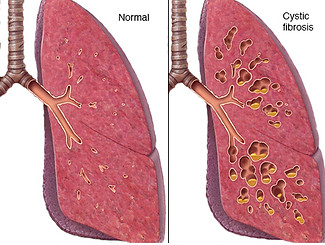
The Human
Genome

History of the Human Genome
1953
Francis Watson and James Crick publish their legendary paper discussing the structure of DNA, a double helix. They note that their work "suggests a possible copying mechanism for the genetic material". Their description explains how DNA contains all necessary knowledge needed to construct a human being. (1.1)

1977
Frederick Sanger created a technique, called electrophoresis, to rapidly sequence DNA so scientists can determine the order of bases in a strand of DNA. "Enzymes are used to synthesize short pieces of DNA." The DNA fragments are divided based on how quick they are able to travel through a gel matrix when an electric field is applied. (1.2)

Cystic fibrosis is one of the most common chronic lung diseases among children and young adults. It causes thick mucus to build up in certain organs including the lungs. Researchers found a small DNA mutation in 70% of cystic fibrosis patients that has not been identified in healthy individuals. (1.2)
1989

Scientists publish the HapMap database outlining variation in the human genome. This database maps the areas in the human genome that are commonly different from person to person. It contains single-letter changes in the DNA code that are passed on from parent to child that contribute to diseases such as cancer. (1.4)
2005

For the first time, scientists decode the whole DNA sequence of a cancer. With the help of sequencing technology, they read the genetic code of leukemia cells of a 50 year old woman. The scientists uncover genetic mutations linked to the patient's cancer by comparing the code of DNA from her leukemia cells to the code of DNA from her healthy cells. (1.1)
2008





